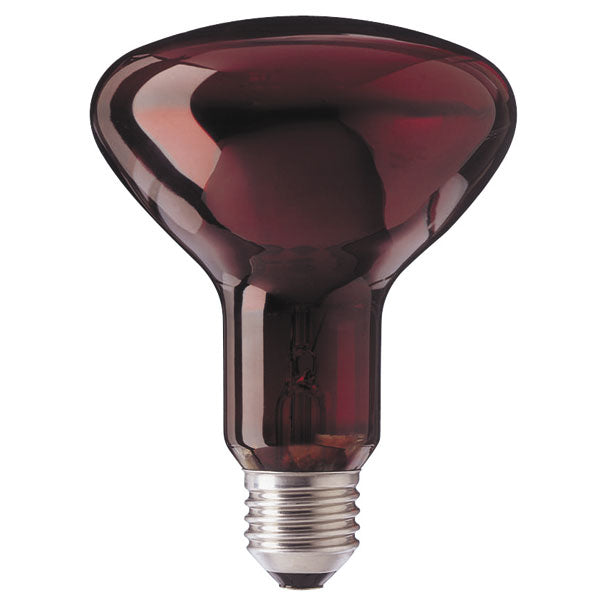
Features
90% of energy is transmitted as infrared
Instant, accurately controllable radiant heat
Special filament design for a concentrated beam
High IR-A radiation level for deeper penetration of muscles and veins
Benefits
Enhanced blood circulation relieves muscular pain
Concentrated heat can be applied to where it is needed
Applications
Providing relief from muscular pain
Providing relief from ailments such as rheumatism, lumbago, neuralgia, and colds
Stimulating recovery from injury
Comfort and cosmetic care
100W
Base E27 Standard Screw Fitting
Ensure the lamp holder is suitable for the wattage
Details Click to see more
Optimum heating economy and efficiency, Philips infrared lamps and similar brands provide an excellent solution for localised heat treatment to provide relief from muscular pain.
They can also be used to treat ailments like lumbago, neuralgia and myalgia and colds. This form of heat therapy has also been shown to speed the healing of different kinds of injuries, including sports injuries and non-infected wounds, and in many cases to provide rapid and effective pain relief.
The benefits of this form of heat therapy are based on a vasodilatory response in the skin which locally enhances the blood circulation. This results in an increased metabolic rate and transport of metabolites and other essential biochemical compounds. Benefits are also gained by deeper penetration of heat which provides a gentle and pleasant warming effect.
The effects of heating in the skin are related to the different layers of which the skin is composed, which have different light-absorbing characteristics. The epidermis or outer part of the skin is itself made of two layers: the stratum corneum or horny layer, with a thickness of 8 - 20 m, and the stratum malphigi, with a thickness of 50 - 150 m. Below the epidermis is the dermis, which varies in thickness between 1 and 4 mm. All these layers have different refractive indices and different reflection, transmission and scattering characteristics, depending on the wavelength of the light. Infrared radiation in the IR-B (medium infrared: 1.4 - 3 m) and IR-C (long infrared: 3 m - 1 mm) ranges is absorbed in the top layers of the skin. Because of the low thickness of these layers, the result is a relatively strong heating effect with a high temperature up to the pain threshold at approximately 45C being reached rapidly. The shorter-wavelength IR-A radiation (780 - 1400 nm) has a greater penetrating power. This means that the heat is dissipated in a larger skin volume, creating a more pleasant and diffuse warmth.
The Philips infrared heating lamps have a wavelength spectrum with a pronounced peak at approximately 1000 nm in the deep-penetrating IR-A range.
This radiation characteristic makes them ideal radiant heat sources for treating deeper-seated muscular ailments and sports injuries.
For optimum directional control of the heat radiation, the PAR38 lamps have concentric rings in the front glass. All types have a red lacquered front to reduce visible light emission, thereby virtually eliminating disturbing glare. The red filter also cuts off light below 600 nm to reduce radiation which would be absorbed by the blood haemoglobin (prevention of haemolysis). All types have a 300 hour lifetime at 100% output. Infraphil lamps are intended specifically for use with heat radiation equipment marketed by Philips Domestic Appliances Division, while the Philips Infrared lamps can be used with any suitable equipment. All types have a universal burning position.

